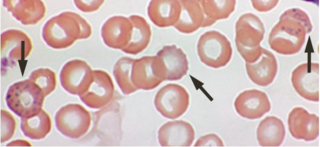Neuroscience
Heavy Metal: Lead and the Brain
Why is lead so toxic to the developing brain?
Posted January 23, 2016

The recent news covering the terrible exposure of thousands of children to toxic levels of lead from the contaminated water supply in Flint, Michigan has led to outrage in the populace and turnover of government officials charged with protecting our health from known poisons. A local pediatrician, Dr. Mona Hanna-Attisha found that lead levels were doubling and even tripling in the toddler populations. At first her warnings were ridiculed and ignored before action was finally taken. There is no “safe” threshold of blood lead levels in children. As this blog has reviewed the effects of many minerals on the brain, among them magnesium, zinc, and iron, it seemed timely to turn our attention to a mineral that is dangerous rather than beneficial.
Interest in the toxic effects of lead on the nervous system in the modern age began in the mid-20th century, when it became clear that exposure to leaded paint and perhaps emissions from leaded gasoline seemed to cause both subtle and devastating neurological problems, from lower IQ, attentional and behavioral problems to severe encephalopathy and death. Members of the lost Franklin expedition were exposed to high levels of lead in poorly canned foods, perhaps explaining some bizarre behavior and apparent violence that doomed the crew. With industrialization, It’s estimated our background environmental exposure is 100 times higher than it was in our ancestral past. Children, with growing brains, smaller body mass, and greater likelihood of environmental exposure from sticking hands in the mouth are particularly vulnerable to the effects. Lead is stored in part in the bone, so conditions like pregnancy and breastfeeding that call for the mobilization of calcium from the storage in the bones can also increase serum blood levels of lead, even decades after exposure.
Lead, mercury, cadmium, and other very toxic metals are all cations, that is, their atoms have a positive charge. They can react with a lot of negatively charged chemicals necessary for the action of living cells, and also inhibit the action of enzymes, damaging cell membranes and proteins in the body. Lead itself is known to disrupt heme, the chemical that carries oxygen in the blood, and it also directly damages GABA neurotransmitter systems. GABA is the main inhibitory neurotransmitter in the brain, in some respects a brain “off” switch and useful as the anti-anxiety neurotransmitter and also a major contributor to sleep.
One of the theories of many psychiatric and neurological disorders, from migraines to mania to seizures is the theory of “excitotoxicity,” that is turning on neuron signaling and keeping it on too strong and too long, leading to neuron damage and problems down the line. Think of racing a horse and pushing it and pushing it until it collapses from exhaustion…neurons in the brain can also be pushed too hard and too long. Since positively charged calcium ions hanging out in the synapse flooding into the neuron can cause excitotoxicity, tight control of calcium in the brain is especially important to avoid any of these problems. Unfortunately, lead seems to interfere with this control of calcium, leading to devastating downstream consequences. The worst of which is that it seems to damage the mitochondria, or energy producers in the brain, and lead also disrupts the blood-brain barrier.

Fortunately, with environmental clean-up, the banning of leaded paint and leaded gasoline, blood lead levels have been falling since the 1970s in the United States. Remaining high lead levels occur disproportionately in the poor and in non-Hispanic black populations. Flint, Michigan, with old leaded pipes exposed to corrosive water, will continue to have high amounts of lead in the water for some time even though the water has been rerouted to the previous, cleaner source.
High lead levels are treated with chelation therapy, but the damage can be irreversible. The most important step in treatment is to identify and remove the source of exposure. Such wide-scale poisonings as occurred in Flint support the necessity of continued monitoring of lead levels in the water and the practice (required by many states and also mandated by insurance companies) of measuring lead levels at least once in toddlers.
CDC guidelines for monitoring and mitigating lead exposure in children: http://www.cdc.gov/mmwr/preview/mmwrhtml/rr5608a1.htm


